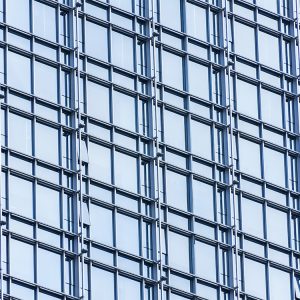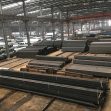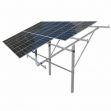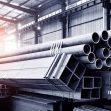Energy saving design of a curtain wall project in St. Petersburg
The average temperature in the coldest five days of winter in St. Petersburg, Russia’s second largest city, reaches -26℃, and the temperature difference between indoor and outdoor is more than 50℃. The curtain wall glazing project is a unit type, with a building height of 83.4m and a curtain wall area of 15300㎡. In consideration of the special climate of St Petersburg, the project selects the three-glass double-cavity insulating glass with low radiation from AGC. The three-glass and two-cavity insulating glass mainly achieves energy saving effect in the following aspects:

The substrate glass is the main material of insulating glass. The product of the thickness of glass and the thermal resistance of glass is directly related to the heat transfer coefficient of insulating glass. When the thickness of curtain wall window glass increases, it will inevitably increase the glass’s ability to block heat transfer, thus reducing the heat transfer coefficient of the whole insulating glass system. The combination of three substrate glasses can be approximately regarded as the accumulation of thickness, that is, the total thickness is 24mm. Through the control of the thickness of the gas cavity, the heat transfer of the turbulent airflow is formed inside the insulating glass, and the rising and falling airflows interfere with each other to control the convective heat transfer. The thickness of the gas cavity is directly related to the heat transfer coefficient. Under the same conditions, the larger the gas layer is, the greater the heat transfer resistance is. It should be noted that when the thickness of the gas layer reaches a certain degree (about 19mm), the growth rate of heat transfer resistance will be very small, because at this time, the gas will generate a certain convection process under the action of temperature difference between the glasses of modern curtain wall, thus reducing the effect of gas layer thickening. Therefore, a gas chamber with a thickness of 12mm was determined under dual considerations.
Aluminum alloy frame is not the main way of heat transfer, but once the treatment is not good and there will be a “cold bridge”, there will be a lot of heat loss, and will be in the indoor condensation, the formation of condensation water. Breaking heat treatment is the top priority in frame design, which is to ensure the heat breaking function and meet the strength requirements of curtain wall structure. In addition, the connecting parts of male frame and female frame adopt multiple EPDM strips to form multiple isobaric cavities to solve the water tightness problem. Under the combined action of glass and aluminum frame, the thermal insulation performance of the outer envelope can be satisfied, and there will be no condensation phenomenon.
Tel: +86 18202256900 Email: steel@tjdpbd.com










